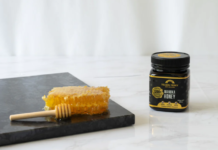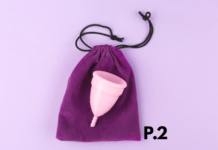Do you often wake up to find that one nostril is blocked while the other is clear? This can be frustrating and uncomfortable, but it’s not uncommon.
There are various reasons why this happens, from your sleeping position to your nasal cycle. The good news is that there are simple ways to address this issue and breathe easier. In this article, we’ll explore the causes of a blocked nostril and what you can do to alleviate the symptoms.
Why Is 1 Nostril Always Blocked?
According to Anthony Cornetta, MD, a board-certified otolaryngologist at NYU Langone, there are several potential reasons why one nostril may be consistently blocked. Here are some common causes:
Nasal Cycle

The human body naturally undergoes something called the nasal cycle, in which congestion alternates between the two nostrils. This cycle typically occurs every few hours and can last anywhere from 30 minutes to several hours.
During this time, one nostril will feel more congested than the other. The cycle is regulated by the autonomic nervous system and helps to regulate airflow and moisture in the nose.
If you’re experiencing a blocked nostril, it could simply be due to the natural nasal cycle. Some people may be more aware of this cycle than others, but it’s generally not a cause for concern and doesn’t require treatment.
However, if you’re experiencing prolonged or severe congestion, it’s best to speak with a medical professional to rule out any underlying issues.
Sleep Position
Your sleeping position can also contribute to a blocked nostril. Sleeping on your back can cause gravity to pull the tissues in your nose downward, leading to more congestion on one side. This is because when we lie down, the blood vessels in our nasal passages become engorged and swell, making it harder to breathe through the nose.
To alleviate this issue, try sleeping on your side instead of your back. Elevating your head with an extra pillow can also help to reduce congestion and promote better airflow.
Allergies
Allergies are a common cause of nasal congestion. When you’re exposed to an allergen, such as pollen or dust, your body produces histamine, which can cause inflammation and swelling in the nasal passages. This leads to congestion and difficulty breathing through the nose.
If you suspect that allergies are causing your blocked nostril, speak with a medical professional about allergy testing and treatment options. Over-the-counter antihistamines and nasal sprays may provide relief, but it’s best to get a proper diagnosis before starting any treatment.
What Can You Do About a Blocked Nostril?
Now that we’ve explored some potential causes of a blocked nostril, let’s take a look at some ways to alleviate the symptoms:
Nasal Irrigation

Nasal irrigation involves flushing out the nasal passages with saline solution. This can help to remove excess mucus and debris, reduce inflammation, and promote better airflow. You can purchase a saline solution at your local pharmacy or make your own by mixing salt and water.
To perform nasal irrigation, tilt your head forward and pour the saline solution into one nostril. Let the solution flow out the other nostril and repeat on the opposite side. It’s important to use sterile equipment and follow proper hygiene practices to avoid infection.
Decongestants
Decongestants can help to relieve nasal congestion by reducing inflammation in the nasal passages. They come in various forms, including pills, nasal sprays, and drops. However, it’s important to use decongestants sparingly and according to instructions, as overuse can lead to rebound congestion and other side effects.
It’s also worth noting that decongestants should not be used for more than a few days at a time, as they can cause dependence and worsen the symptoms in some cases.
Humidifiers
Dry air can exacerbate nasal congestion, so using a humidifier can help to add moisture to the air and promote better breathing. Humidifiers come in various types and sizes, from portable units to whole-house systems.
When using a humidifier, it’s important to keep it clean and change the water regularly to avoid the growth of bacteria and mold. It’s also best to use distilled or demineralized water to prevent mineral buildup in the unit.
If you’re experiencing prolonged or severe congestion, it’s best to speak with a medical professional to rule out any underlying issues and get personalized treatment recommendations.
By addressing the root cause of your blocked nostril and taking steps to promote healthy breathinghabits, you can enjoy better overall health and quality of life. Remember to practice good hygiene habits, such as washing your hands regularly and avoiding touching your face, to prevent the spread of germs and infections.
In addition to the tips outlined above, there are several other lifestyle factors that can contribute to healthy breathing and reduce the risk of nasal congestion. These include:
Exercise

Regular exercise can help to improve lung function, strengthen respiratory muscles, and boost circulation in the body. This can reduce the risk of respiratory issues and improve overall health and well-being. However, it’s important to start slowly and gradually increase intensity to avoid overexertion and injury.
Diet
Your diet plays an important role in maintaining healthy breathing and reducing inflammation in the body. Eating a balanced diet rich in fruits, vegetables, whole grains, and lean proteins can provide essential nutrients and antioxidants that support respiratory health. It’s also important to stay hydrated by drinking plenty of water throughout the day.
Stress Management
Stress can have negative effects on the body and increase the risk of respiratory issues, including nasal congestion. Practicing stress management techniques, such as deep breathing, meditation, yoga, or mindfulness, can help to reduce stress levels and promote relaxation.
Sleep Hygiene

Getting enough sleep is crucial for overall health and well-being, including respiratory health. Aim to get 7-9 hours of sleep each night and establish a regular sleep schedule to promote healthy sleep habits. It’s also important to create a comfortable sleep environment, free from distractions and disruptions.
By incorporating these lifestyle habits into your daily routine, you can support healthy breathing and reduce the risk of nasal congestion and other respiratory issues.
Conclusion
A blocked nostril can be frustrating and uncomfortable, but it’s not uncommon. Understanding the potential causes of nasal congestion and taking steps to alleviate the symptoms can help you breathe easier and enjoy better overall health and quality of life.
If you’re experiencing prolonged or severe nasal congestion, it’s important to speak with a medical professional to rule out any underlying issues and get personalized treatment recommendations.
In the meantime, practicing good hygiene habits, using nasal irrigation or decongestants, and incorporating healthy lifestyle factors, such as exercise, diet, stress management, and sleep hygiene, can help to reduce the risk of nasal congestion and promote healthy breathing.



















